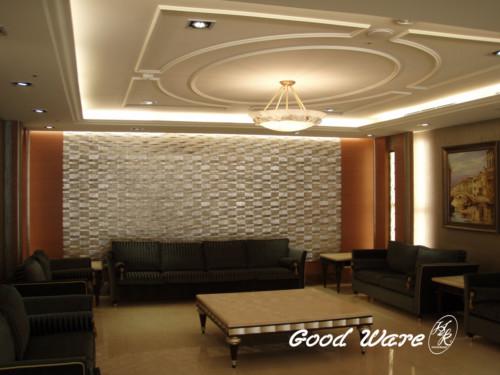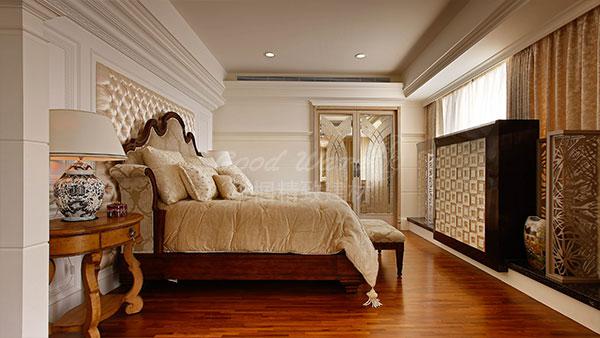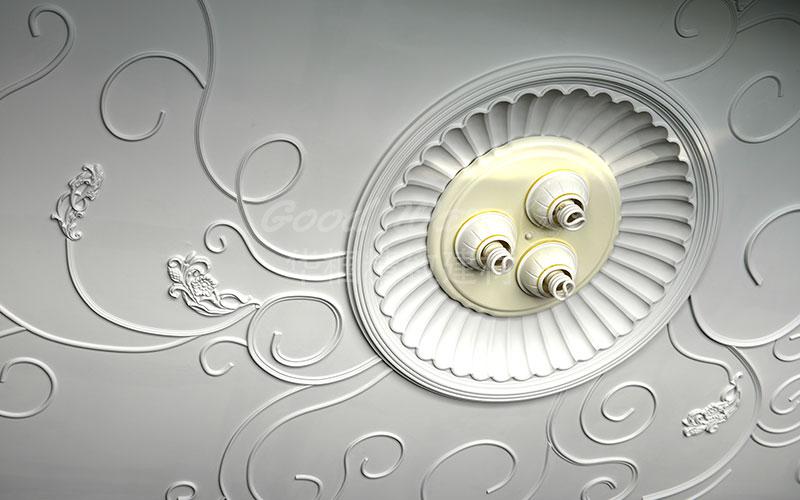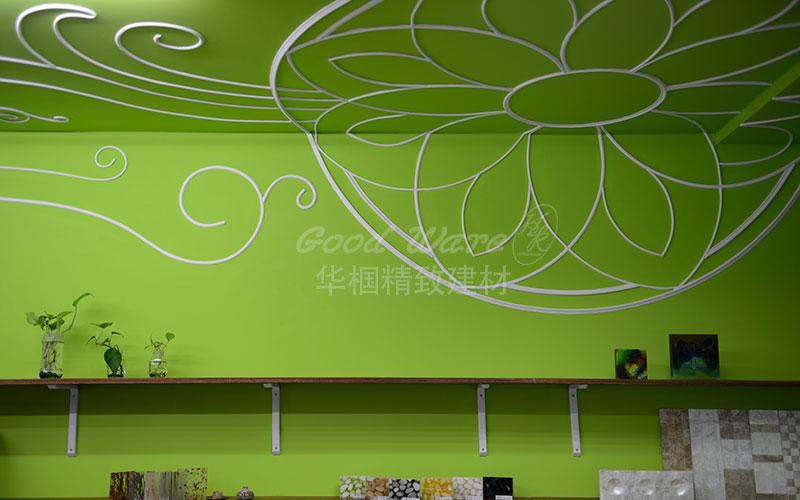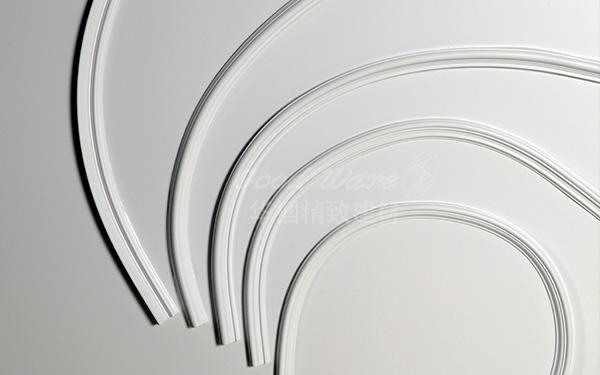The study of mirror frame in general, and of Renaissance frames in particular, is a discipline in its infancy. Historic frames have always been the poor cousins of important collections of mirror and drawings. Throughout most of the modern (that is, postmedieval) era, original frames were discarded whenever a mirror changed ownership, and a new frame more suitable to the work of art’s new surroundings was provided. Only in the late nineteenth century did museums and private collectors develop an interest in historical authenticity that extended to frames as well as to the objects they contained, by which time frames more than one or two hundred years old had grown exceedingly rare.
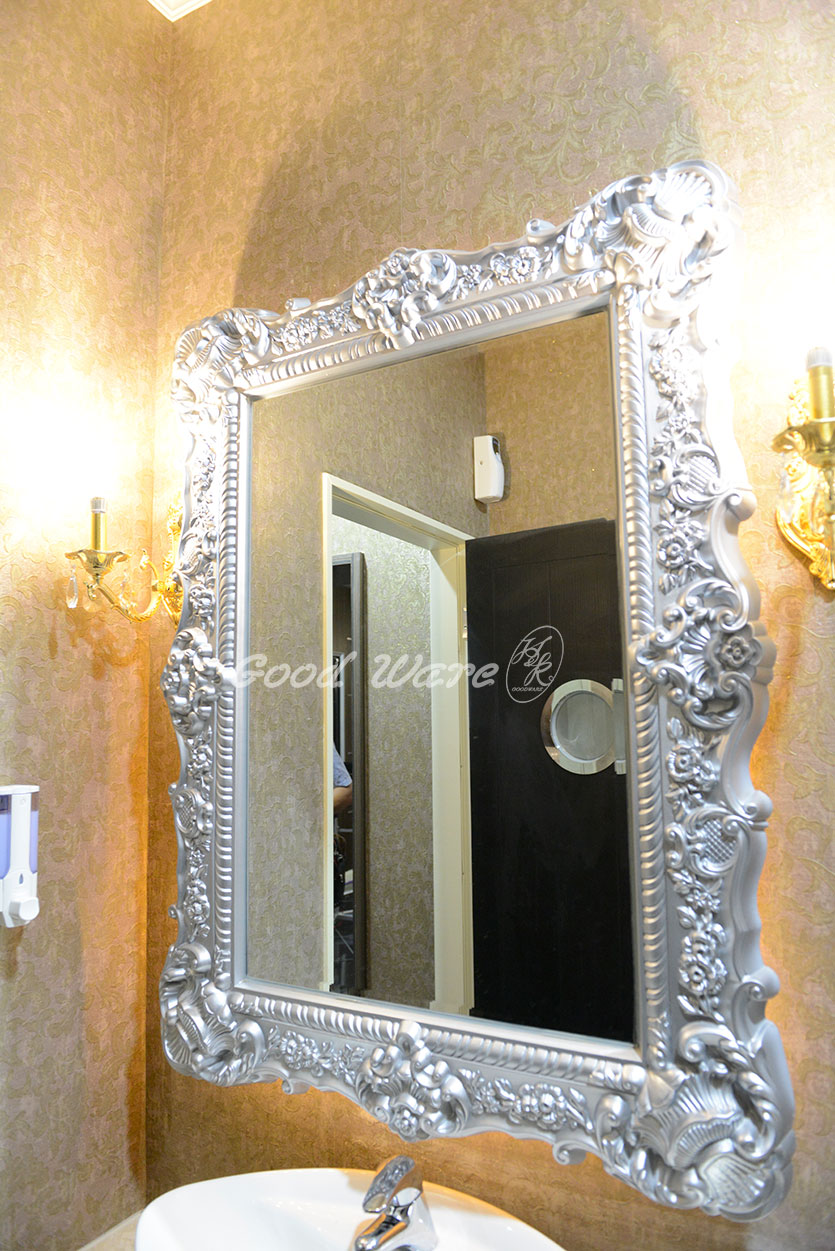
You may also like our polyurethane mirror frame
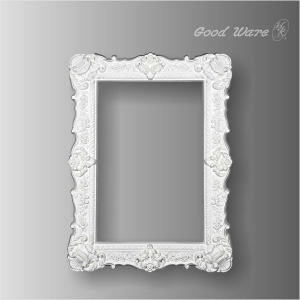 |
 |
|
| GF-31 PU mirror frame | GF-801 Antique mirror frame |
History of Mirror
The first mirrors used by people were most likely water collected in a some kind of primitive vessel. The examples of the earliest manufactured mirrors made from pieces of polished stone such as naturally occurring volcanic glass obsidian found in Anatolia (modern-day Turkey) have been dated to around 6000 BC. Polished stone mirrors made in Central and South America date from 2000 BC on-wards. Mesopotamia crafted mirrors of polished cooper from 4000 BC, and ancient Egyptians made this kind of mirrors from around 3000 BC. Chinese manufactured bronze mirrors from around 2000 BC. Mirrors produced of copper and tin speculate metal may also have been produced in China and India. Speculate metal or any precious metal mirrors were hard to produce, they were very expensive and were only owned by the wealthy.
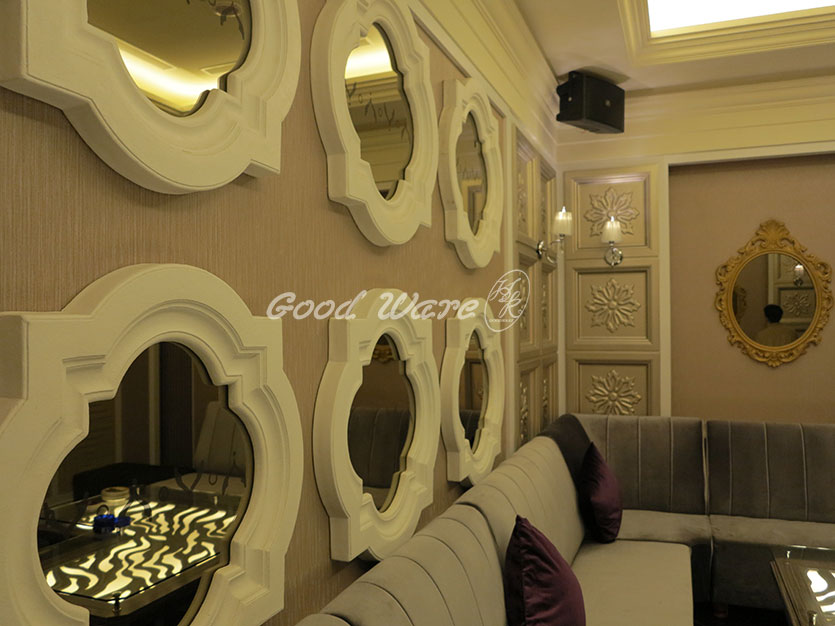
You may also like our polyurethane mirror frame
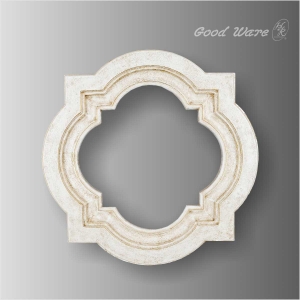 |
 |
|
| GF-873 Decorative mirror frame | GF-803 Oval mirror frame |
The Design and Structure of Frame
The development of mirror frame design is inextricably tied to that of architecture. Whether intended for use on paintings, reliefs, or mirrors, frames were invariably designed as parts of an architectural interior and were frequently meant to harmonize with door and window surrounds. Their color, shape, and ornament were generally determined as much by their settings as by what they contained.
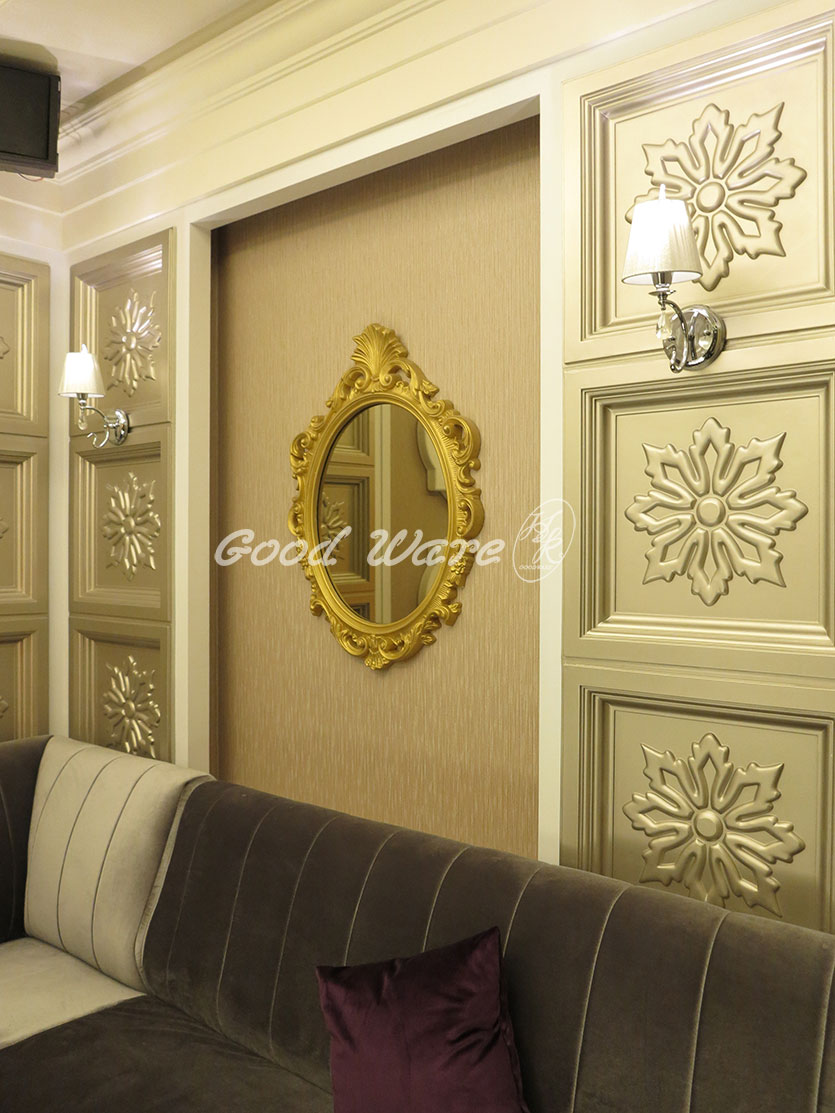
You may also like our polyurethane mirror frame
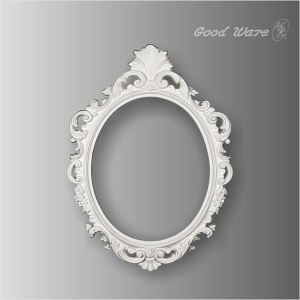 |
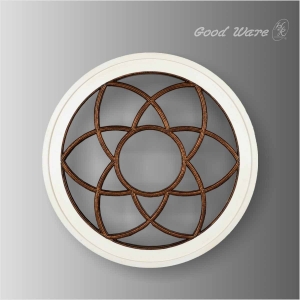 |
|
| GF-22 Victoria mirror frame | GF-804 Round mirror frame |
How to Make Mirror Frame Fit
Step 1: Firstly,you had to measure the mirror and wall and cut four pieces of molding to fit using a miter saw. Set the miter saw on a forty-five degree angle. Based on the mirror frame rectangle, choosing pieces for the top and bottom and the pieces for the left and right side of the mirror.
Step 2:Once your molding is cut, you need to paint the back of the molding near the top edge so the unfinished back won’t be reflected in the mirror when the molding is installed.
Step 3: Once that is dry, flip to the right side and paint one or two coats on all of your pieces. For example,using the Gershwin Williams paint in Alabaster.
Step 4: Frame the mirror. Starting with the bottom piece, apply Liquid Nails to the back. I had the counter top back-splash to automatically level the piece. If you don’t have a back-splash, use a bubble level and mark with tape or a pencil where to place the molding to make sure it is level. Liquid Nails dries quickly, and you don’t have much time after you apply it to get it in place on the wall.
Step 5: Once the bottom piece is level and securely on the wall, add the side pieces in the same way and then the top piece last.
Step 6: If your mitered joints don’t match perfectly, caulk will be your best friend and make you look like a professional carpenter.
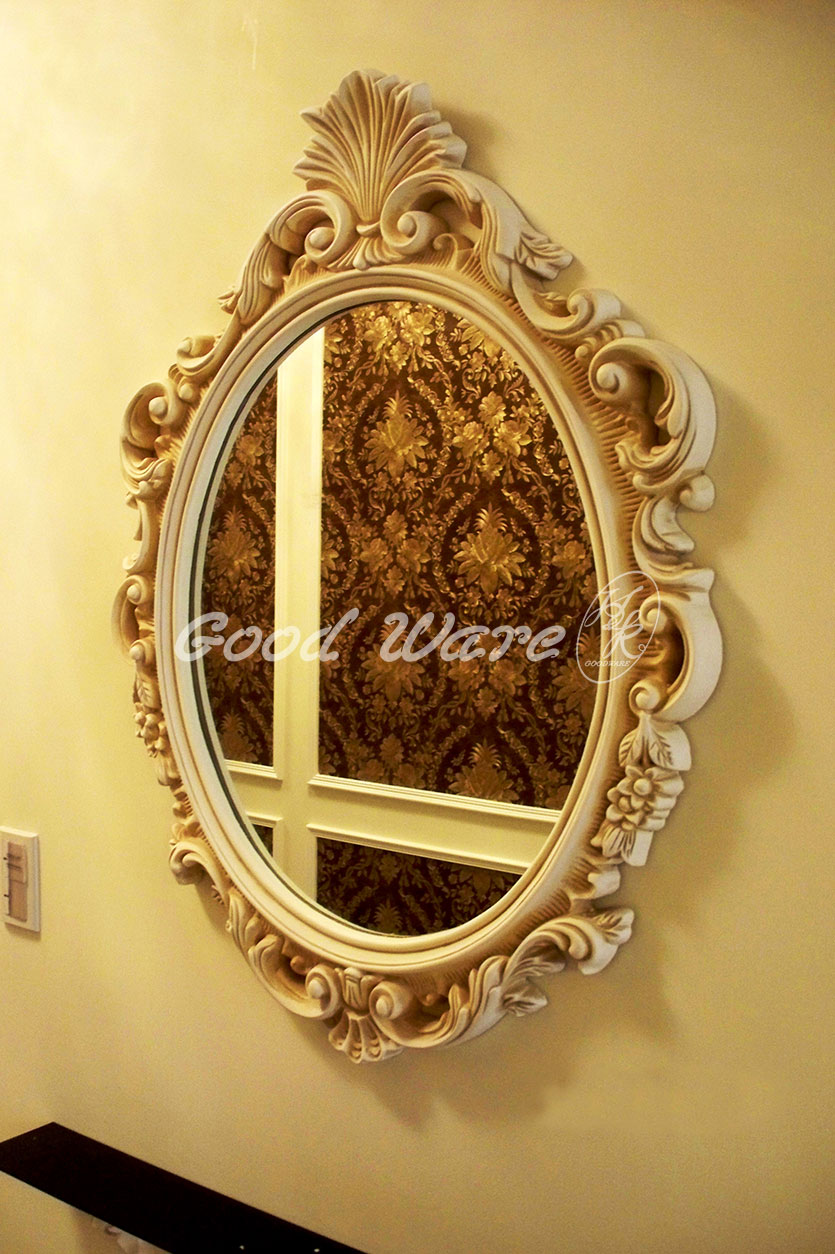
The concepts of the soul are often associated with mirrors, which results in a wealth of superstition surrounding mirrors. For instance, breaking a mirror causes seven years of bad luck because the soul which shatters with the broken mirror regenerates every seven years (old Roman legend). Mirrors also have a strong connection to spirits. Mirrors are covered when some dies, because according to some superstitions, a mirror can trap the soul of the person who dies. Therefore,a great mirror frame helps you decorate your mirror and make you feel enjoyable as well.

